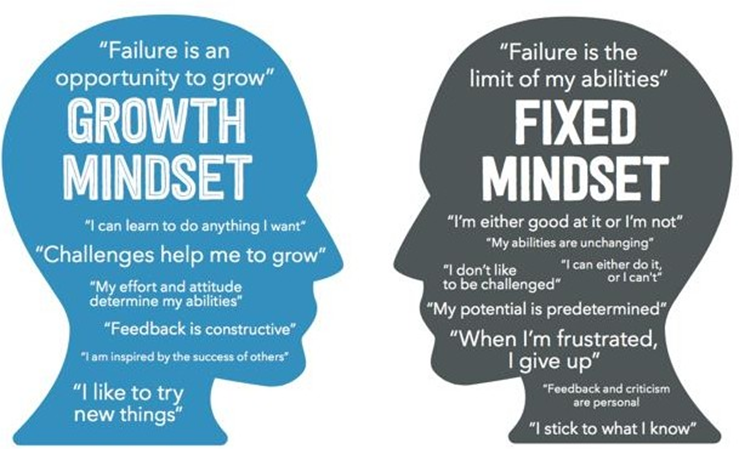Table of Contents

The United States is always at the top of the list for international students, whether for foreign studies or simply as a vacation destination. Why shouldn’t it be? This nation has a lot to offer. It has one of the most prestigious and highly regarded education systems in the world, and its distinctive curriculum welcomes anyone with a keen interest in gaining in-depth knowledge in any field of study. Moreover, Due to the expanding economy, they have been able to invest in skilled labor, resulting in unique opportunities, abundant courses, a diverse landscape, and a multicultural environment
Presence Of Top Institutions
Courses and programs at American universities are diverse. They enable you to personalize not only the course content but also the structure. To provide an excellent education to international students, institutions in the United States are known for having high academic standards and quality practices and are well-supported. Universities understand the challenges that international students face and, as a result, provide orientation programs, workshops, and training to help them. In addition, they assist you in adjusting to your new way of life. As a result, many international students enroll, resulting in diverse cultures, races, and ethnicities.
The diverse culture and American life on campus will provide you with an enriching and stimulating educational experience. Most colleges in the United States seek students who are diverse and well-rounded. Growing up in a diverse environment will provide you with strong personality traits and skills that are valuable in the international market.
The Education System In India Vs The USA
The American education system is quite different and holistic in its approach, which attracts a diverse range of international students, particularly Indian students:
American Vs Indian System
Pre-primary (kindergarten), primary (1st to 8th grade), secondary (9th to 10th grade), and higher secondary education are all available in India (11th to 12th grade). After the 12th grade, students can immediately enroll in any professional course of their choice, resulting in a shorter study period to become a professional. Uniforms are highly valued and strictly enforced in Indian schools.
The American system, on the other hand, has three levels:
- Elementary school (Kindergarten through fifth grade)
- Middle school (6th to 8th grade)
- Higher secondary education (11th to 12th grade)
Students can enroll in bachelor’s courses in college and then in professional courses in universities, resulting in a longer study time to become a professional. In addition, the dress code is adaptable.
Tests
Even the lower classes in India have formal exams, putting pressure on kids from a young age to perform well. Parents are also stressed and cancel all other activities to focus solely on creating a study environment for their children. Most exams assess your ability to memorize rather than your ability to think critically and creatively. The emphasis in the Indian system is on memorization. Students focus on soaking up as much information as possible. As a result, Indian students perform poorly in “soft” subjects and critical, independent thinking in general. Personality development and social skills are generally ignored in schools, and our grade is determined by how well we perform on the midterm or final exam.
In contrast, the American system allows creative children to excel, and exams are a regular part of the curriculum, so students do not need to prepare in advance. Although this changes as they progress to higher classes, where students must prepare ahead of time, it is not as stressful. The American system strongly emphasizes soft skills and develops more rounded competitors with a broader cross-section of knowledge. Unlike in the United States, assignments, quizzes, daily homework, and so on do not carry much weight regarding final grades.
Grading
In India, only the 12th grade is considered for college admission, unlike the continuous and comprehensive evaluation from 9th to 12th grade in the United States. As a result, there is less pressure to maintain grades throughout the four years. As a result, most grades are A+, A, B+, B, C+, C, D, and F.
The grading system in the United States is very different from that of India. For the entire high school, grades are converted to GPA. According to the percentage obtained, the grades will be A, A-, B, B-, C, C-, D, D-, and F. Teachers administer tests, grade various quizzes and performances, and then convert them to a scale of 100.
Syllabus And Textbooks
Students in the USA don’t need to bring many books to school. The job is well organized and streamlined. The emphasis is mainly on engaging kids in entertaining, creative learning activities and projects. By teaching youngsters how to learn, they prepare them for the future.
Indian schools require students to carry more books than American schools do. Even the lower levels must carry a large number of textbooks and books each day to school. The educational system is more rigid and more dependent on homework.
Learning and teaching children to investigate and comprehend concepts is a fundamental tenet of the American educational system. Allowing them to apply what they learn in textbooks to real-life scenarios, Not putting too much emphasis on written tests but on a child’s day-to-day practical evaluation rather than academic competition. The Indian educational system, on the other hand, places a strong emphasis on academic excellence and places a high value on performance in final exams. Academic performance is prioritized over other co-curricular activities
Career And Growth Opportunities
Not only does the United States have the best career courses, but it also has fantastic post-study employment opportunities. The number of international students has skyrocketed. When students choose to study in a foreign country, they can learn about the culture of a new place. Every year, hundreds of thousands of international students are drawn to the allure of high-paying jobs and financial stability. The US economy added nearly 4.8 million jobs. The country continues to add jobs for every qualified candidate. The most in-demand job sectors in the United States for international students are technology, healthcare, and business management. Students from all over the world attend the best courses available in the United States.
Job searching is always tricky but challenging and frustrating for international students. Employers frequently expressed reluctance to hire international students. In addition, employers may be unaware of cultural differences and visa requirements, making it difficult for international students to find work. It is your responsibility to provide this information to potential employers. The job market in the United States is likely to be vastly different from that in your home country, and you should do everything you can to learn about it.
Many employers prefer to hire US students over international students. But don’t give up; companies in the US hire international students, and you can find a great job in the USA.
Academic Environment
The education system in the United States provides students with numerous options and is very practical in its approach. The environment provides them with a secure environment to learn and comprehend their subjects. In addition, the domain provides students with well-rounded opportunities, implements a healthy work environment for staff, and focuses on improving educational quality.
Each student in the United States is assigned an academic advisor upon enrollment in a program. Students can discuss course selection, specialization, research area, and so on to score enough credits effectively.
It is critical for international students, in particular, to maintain contact with their advisers throughout their program of study. Most of the time, it is the student’s responsibility to enrol in and select coursework. Students should exercise caution when deciding courses and hours for the semester to ensure they have enough courses to maintain full-time enrollment. Choosing too many courses may prove difficult for students, so they should always be mindful and aware of their chosen courses and programs. Students can even mix introductory and advanced courses.
Students are expected to be attentive and consistent in class. They should participate in class discussions, turn in assignments on time, and ask questions when they are unsure. The course instructor shares everything, from the course plan to the textbooks that must be referred to.
It is also worth noting that higher education institutions in the United States have stringent honour codes/codes of conduct. In addition, academic integrity, cheating, and plagiarism policies are expected of all students.
Support For International Students
The United States is a famous study abroad destination for international students. However, it can also be one of the most expensive destinations because international students must pay for tuition and living expenses such as room and board, utilities, transportation, supplies, and health insurance. They may not have the entire amount of money available.
The majority of institutional aid available to international students is for graduate studies. Because such scholarships are uncommon, they are frequently highly competitive. Some public and private universities provide financial incentives to students who enroll. In some cases, some universities may waive application fees.
A few merit-based scholarships are also awarded based on unique skills, talents, and abilities. These scholarships are typically highly competitive. To be eligible for a scholarship, you must excel in the required subject.
Financial need is used to determine need-based scholarships. Those who demonstrate a predetermined level of need are eligible for this type of assistance. Many academic departments may have budgeted money to help international students. You can speak with your academic adviser about any unique funding opportunities. Tuition waivers allow students to avoid paying some or all of their tuition for one or more years. The college will specify what condition must be met to receive a tuition waiver.

Conclusion
The main question is whether or not Indian students should pursue a career in the United States. It is, in my opinion. There are numerous areas where India lags far behind the United States. Most graduates in India are qualified but cannot advance due to a lack of opportunities and resources. Most students study abroad because the resources, exposure, and overall educational environment are pretty advanced.
The United States’ growing economy has enabled them to invest in education, attracting billions of international students each year. This positions the country as one of the best places for education but also contributes to the country’s overall growth and prosperity. In addition, companies and MNCs can select an eligible candidate from a diverse pool of candidates because of the diversity. As a result, if you want to study abroad, the United States is one of the best options.





